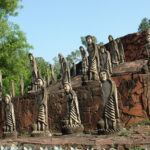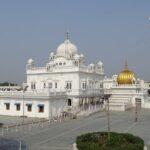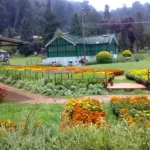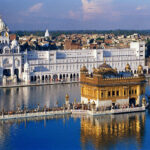Historic sites in Delhi offer visual entertainment and inspiring information for history lovers, art professionals, and visitors alike. Even better, some of these sites have reached the UNESCO World, Heritage List. As of 2018, there are three World Heritage Sites in the city and you should not miss visiting any of these. Here is the list.
Red Fort, Delhi
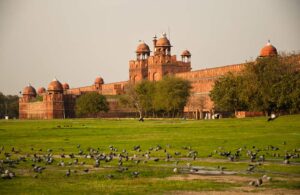
Also known as Lal Qila, Red Fort was healed by Shah Jahan, the fifth Mughal ruler, in 1639. Since then, it has been the seat of numerous Mughal emperors who enjoyed the royal residence of this magnificent castle during their time. the rule in Delhi. The castle derives its name from the red sandstone used in the construction of its fortified walls. Today, Red Fort is not only the center of millions of tourists every year but also the main venue for the country’s Independence Day celebrations, where the Prime Minister raises a flag and addresses citizens. History has it that the fortress was once decorated with numerous paintings and gems, all of which were looted during the invasion of Nadir Sha. However, this monumental structure remains one of India’s most treasured treasures.
Humayun’s tomb, Delhi
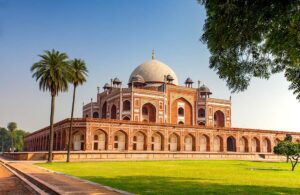
On the one hand, Delhi contains magnificent fortresses, and on the other hand, it is filled with magnificent mausoleums inhabited by the tombs of great emperors who helped to shape the history of the Indians. Humayun’s tomb, also known as Maqbara in Humayun, is not inferior to the magnificent architecture, though it is a monument containing the tomb of the great Mughal emperor Humayun. Designed by two Persian architects in a famous charbagh building, it is one of the most beautiful garden cemeteries in the country, which also inspired a few other monuments, including the Taj Mahal. Another interesting fact about this mausoleum is that it was commissioned and directed by someone other than Humayun’s late wife, Bega Begum, in 1570.
Qutub Minar, Delhi
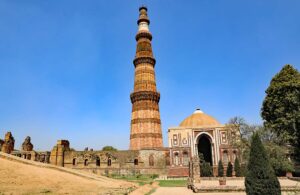
This is very good on the list of the top 10 monuments in Delhi as this is a must-visit for everyone in the city. The world’s tallest brick minaret, Qutub Minar is designated a UNESCO World Heritage Site because of its rich history and creative design. Although the construction of this huge structure was initiated in 1192 by Qutb-Ud-din-Aibak, founder of the Delhi Sultanate, the minaret was completed for many years under the direction of many emperors who came after him. Not just the minaret but a few other historical monuments within the complex, such as the Alai Darwaza, Quwwat-ul-Islam Mosque, the Tomb of Iltutmish, etc., are large objects that often leave viewers in awe.
Jantar Mantar, Delhi
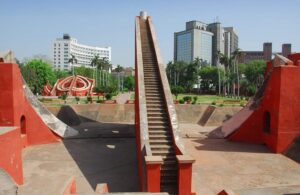
If you are interested in how the rulers of the past created their annual calendar, all you need to do is head straight to Jantar Mantar, a day-to-day exploration center built many centuries ago, in 1724, by Maharaja Jai Singh II of Jaipur. . It has 13 astronomical observatories designed to predict the distance and speed of celestial objects, their position, and the movement of the sun and other celestial objects. The top three tools built here include Samrat, Jayaprakash, and Mishra Yantra which were often used to predict the location of the sun and to find the longest and shortest days of the year.
Purana Qila, Delhi
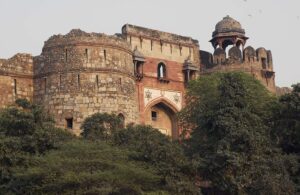
This fortress is famous for two things. First, it is one of the oldest castles ever built in Delhi (5000 years old) and second, it is the site of the death of the Mughal emperor Humayun who climbed the steps of his library and fell to his injuries. Purana Qila, meaning Old Fort, extends beyond the boundary wall of the city on which the city was built and has a defense of 20 feet [20 m] and a foot of four feet [4 m] – truly an impenetrable wall. The glittering sound and the sound carried out here move through the history of this little-known castle that traces its origins to the 16th Century. Without this show, one can even choose to board a refreshing boat on the edge of the castle.
Jama Masjid, Delhi
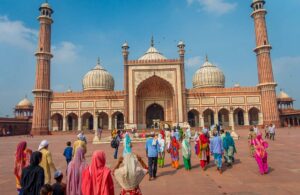
This magnificent mosque made of red sandstone and marble was built by the great Shah Jahan and is considered one of the largest mosque sites in India. It was built for one million rupees between 1644 and 1656 and it was the Imam of Uzbekistan who opened this beautiful place of worship. The mosque can accommodate about 25,000 worshipers at a time in its courtyard. The Eid festival finds thousands of worshipers performing their morning Namaz at this monument. Visit this site in the evening for a more immersive sunset experience where the dome and minaret are lined with beautiful crimson orange colors.
Agrasen Ki Baoli, Delhi
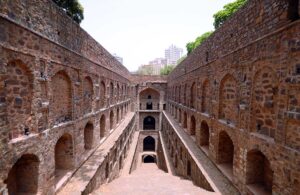
If you have never visited the stepwell, a common sight in many Indian castles, you will surely be amazed at Agrasen Ki Baoli, a historic step that is 60 feet [15 m] long and 15 feet [15 m] wide, respectively. Historical records of its origin are small, but it is believed that the fountain was built by Maharaja Agrasen and rebuilt in the 14th century. This ancient aqueduct protected by the Archaeological Survey of India has 108 steps, and as you dive deeper into the fountain, the wet smell of moisture and the solid rock carvings will take you through a period of history. Don’t go too deep as you may have to fight hundreds of bats before you can find your way back. This historic site of its kind in Delhi has been featured in many films, including PK and Sultan.
The tomb of Lodhi, Delhi
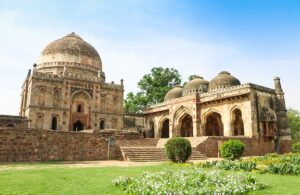
If you are still delayed and wish to explore other cemeteries in the city, head over to the tomb of Sikandar Lodi for a glimpse of the magnificent buildings of the Lodi dynasty that ruled Delhi in the fifteenth century. Located among the green gardens of Lodi, the tomb combines the beauty of the surrounding landscape with ancient history. Built between 1517 and 1518 Lodi’s son Ibrahim Lodi, the tomb is a fine example of Indo-Islamic architectural style.
Hauz Khaz Siri, Delhi
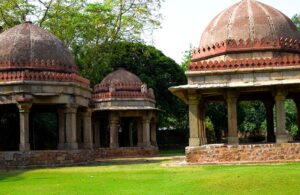
If you choose to explore this castle built by Alauddin Khilji in 1303, you are sure to be impressed by the splendor of the castle, and the feeling of heart warmth penetrates you. That is because about 8,000 Mongol heads were buried here and the rough walls of the fort were created to protect the once beautiful fortress of the Mongols. The palace and fortress were ransacked and their precious stones and other artifacts were stolen during the reign of Sher Shah Suri, leaving a trail of debris in place.
Feroz Shah Kotla, Delhi
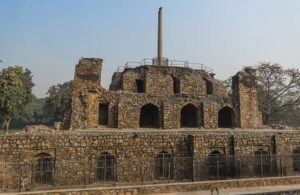
The fort built by Sultan Firoz Shah Tughlaq in the 14th century retains the Chopra Ashokan pillar of the 3rd century, a remnant of the Mauryan dynasty. The castle also has a Jami Masjid, a Baoli or fountain, and a garden structure within it. Behind the castle is a famous cricket ground with the same name. The castle is believed to have been invaded by djinns living on its dark streets and ruins. Certainly one has goosebumps when walking on these trails, especially after sunset.
Safdarjung Tomb, Delhi
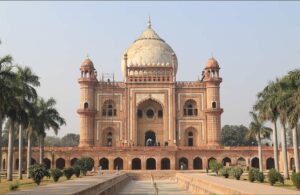
This marble garden tomb made of marble and sandstone by Wazir or the Prime Minister of Mughal descent, Safdarjung, is considered to be the preserve of such a mausoleum, reflecting the style of Mughal architecture. Tomb, built in 1754, also appeared in the American biographical drama Jobs. Scattered charbagh or gardens with running water around it make the mausoleum look like a marvel of art.
Mehrauli Archaeological Park
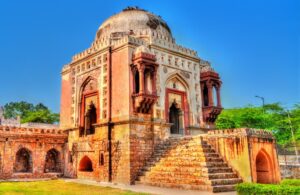
Mehrauli Sprawling over a place of over two hundred acres, Mehrauli Archaeological Park is an essential web website online showcasing the wealthy historical past of India. It is placed close to the Qutb Complex and is thought for housing over one hundred traditionally big tombs and monuments, several of which date returned to the tenth century AD. Some tremendous monuments and systems right here consist of the ruins of Lal Kot Fort, Balban’s Tomb, Qali Khan’s Tomb, Rajon Ki Baoli, Jamali Kamali Masjid and Tomb, and the Dargah of Sufi Saint. Delhi has seven historic cities, and Mehrauli is the best town that has been constantly inhabited for over one thousand years. Although a few systems right here are centuries old, they stand proudly until date, showcasing lots of architectural styles, which include Rajput, Mughal, and Indo-Islamic.
Rashtrapati Bhavan, Delhi
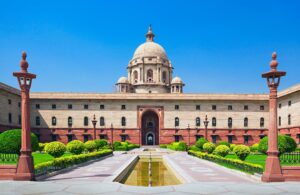
Visiting the Rashtrapati Bhavan is the dream of every Indian citizen who wishes to visit the great Presidential Estate, the magnificent Mughal gardens, and the newly opened museum reflecting the architectural history of this building. Built from 1912 to 1929, this 340-room building once served as the British Viceroy House and was first occupied by Lord Irwin during the British Raj era, and later by C Rajagopalachari after India gained independence. The building incorporates classical motifs, apparently Indo-Saracenic motifs, and features structures such as ivory, acanthus leaves, four hanging ornaments, etc., depicting a combination of Mauryan, Mughal, and regional architectural styles. The Presidential Palace is the second largest in the world after the Quirinal Palace in Rome.
Tughlaqabad Fort, Tughlakabad
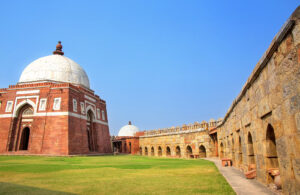
Exhibiting beautiful Islamic architecture, Tughlaqabad Fort is one of the most important historical sites to visit in the Indian capital. It was founded by the founder and first Sultan of the Tughlaq dynasty, Ghiyasuddin Tughlaq, in 1321 AD. Legend has it that the Sultan wanted to build an impenetrable fortress as soon as he sat on the throne. Construction took four years and the fort was abandoned in 1327 after the sudden death of Ghiyasuddin Tughlaq. This huge fortress has fortified walls some 10 feet [10-15 m] high with numerous gates. Parapetles and circular foundations were added to the building for better protection. The castle also includes palaces, great halls, a secret underground, and the mausoleum of the founder, Ghiyasuddin Tughlaq, his wife and son. Although now in ruins, the fortress serves as a reminder of the power and authority of the Tughlaq dynasty.
Lotus Temple, Bahapur
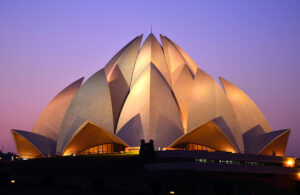
Also known as the Kamal Mandir or Baha’i Lotus Temple, this magnificent structure is one of the most popular places in Delhi. The temple, built in the form of an amazing white lotus, is one of the seven largest Baha’i temples in the world. And like other Baha’i temples, Delhi is open to all worshipers, regardless of their nationality, religion, color, or ethnic background. The temple building consists of 27 independent white marble leaves on 3 levels to form nine sides. Each side has a door, therefore, there is nine doors total leading to a central prayer hall that can seat about 2500 people at a time. The colorful flowers and the shrubs adorn the path to the temple gates, while the nine bright lakes add to the beauty of the complex.

